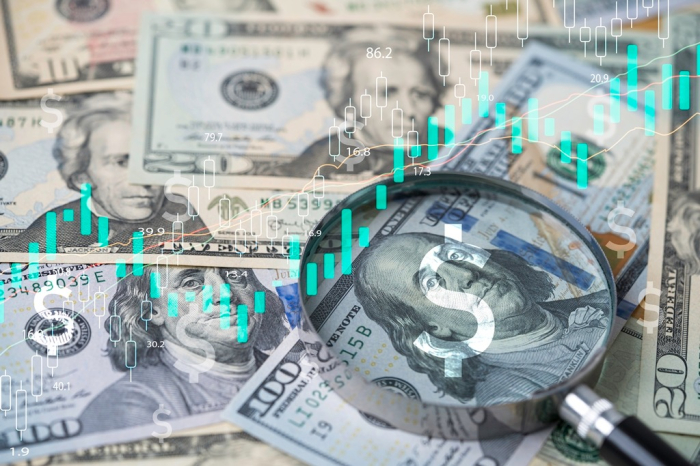Corporate bonds
More Koreans seek high-yield bond funds, betting the Fed will end hikes
Returns of global high-yield bond funds in South Korea have more than tripled those of global bond funds so far this year
By Nov 28, 2023 (Gmt+09:00)
2
Min read
Most Read
LG Chem to sell water filter business to Glenwood PE for $692 million


KT&G eyes overseas M&A after rejecting activist fund's offer


Kyobo Life poised to buy Japan’s SBI Group-owned savings bank


StockX in merger talks with Naver’s online reseller Kream


Meritz backs half of ex-manager’s $210 mn hedge fund



South Korean investors are growing more interested in global high-yield bond funds, betting that the US Federal Reserve is likely to end its interest rate hike campaign as inflation shows signs of easing in the world’s top economy.
An average return of 39 global high-yield bond funds so far this year established in South Korea stood at 5.23%, more than triple global bond funds' average return of 1.72%, according to a financial market tracker FnGuide Inc. on Tuesday. Domestic investors have lost 0.81% on average from US bond funds so far this year.
In the last month, global high-yield bond funds generated an average return of 3.35%, higher than the 2.15% of global bond funds.
Among high-yield bond funds in South Korea, Fidelity Asia High Yield Fund posted a return of 11.43% so far this year, topping the profits of other funds. AllianceBernstein’s AB Global High Yield Fund generated a return of 6.43%, while Mirae Asset Global Investments’ TIGER Short Term Developed Country High Yield Fund and Barings Global High Yield Fund reported returns of 5.26% and 4.73%, respectively.
“Healthy returns and low prices of high-yield bonds are attractive to investors,” said AllianceBernstein Vice President Yoo Jaeheung in Seoul. “The prices of US high-yield bonds are unlikely to fall further without an extreme shock as they are already lower than $90 on average.”
TO SEEK RISKS FOR MORE RETURNS
Global high-yield bond funds usually put money into corporate bonds with credit ratings of BB+ or lower with diversified investments in senior secured high-yield debts in developed countries such as the US. The funds are riskier than other bond funds but provide higher returns.
High-yield bond funds’ returns often rebound quickly after a global economic downturn.
A prolonged downturn increases bankruptcies, however, making it difficult for investors to collect expected profits.
“Investors should be cautious over investing in vulnerable CCC-rated notes or corporate bonds of companies that are closely related to the economic cycle as we still have risks of an economic recession, said Yoo, who is also a fixed-income senior portfolio manager at AllianceBernstein Asset Management Korea.
GLOBAL INFLOWS
High-yield bond funds are also attracting more investors in global financial markets.
US corporate bond funds saw net inflows of $16.4 billion in the first 17 days of November, of which high-yield bond funds attracted $11.4 billion, more than double the $5 billion for investment-grade corporate bond funds, according to fund flow tracker EPFR.
That compared with the first half of this year when high-yield bond funds suffered continuous outflows as the Fed aggressively raised interest rates to curb inflation.
Interest in high-yield bonds also grew as companies have conservatively been managing financial soundness and liquidity since COVID-19. That reduced bankruptcy risks compared to the past, although issuers’ credit ratings remained unchanged.
Write to Man-Su Choe at bebop@hankyung.com
Jongwoo Cheon edited this article.
More to Read
-
 Asset managementInvestors roundtable: Watch out for a possible recession
Asset managementInvestors roundtable: Watch out for a possible recessionNov 16, 2023 (Gmt+09:00)
5 Min read -
 Asset managementFed rate likely to be 2-4% over next decade: Oaktree's Howard Marks
Asset managementFed rate likely to be 2-4% over next decade: Oaktree's Howard MarksNov 15, 2023 (Gmt+09:00)
2 Min read
Comment 0
LOG IN


